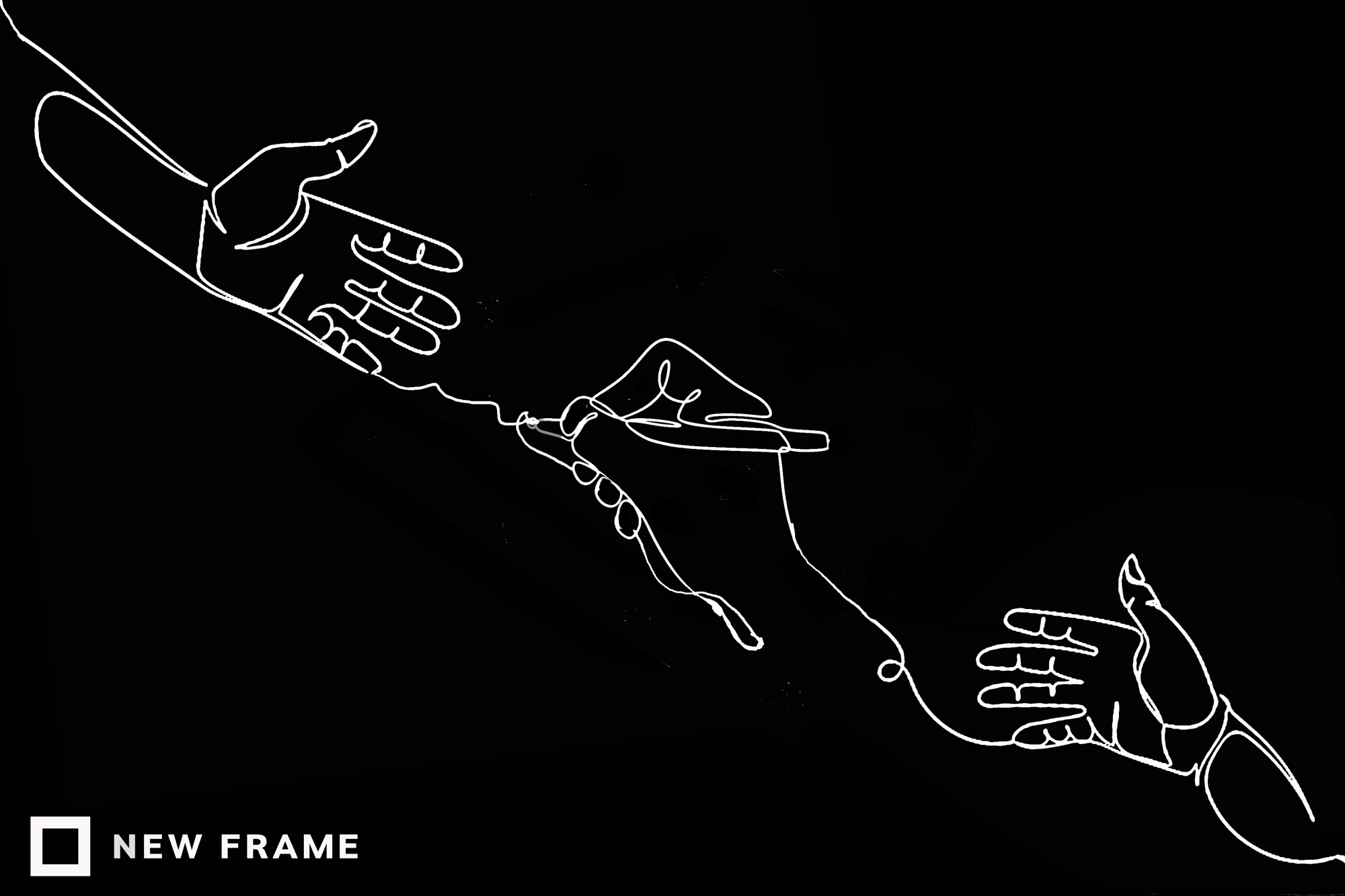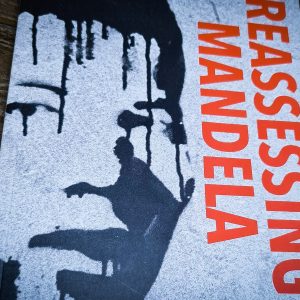Writing of death is private art and public therapy
Eulogy, newspaper article, novel, poem… the obituary epitomises communal mourning, another aspect of being human that has been wrenched from society by Covid-19 restrictions.
Author:
4 May 2021

At the heart of every culture’s funerary ceremonies lie rites meant to guide ritual accounting of the meaning, in death, of the deceased. The obituary and its cousin, the eulogy, is a literary document clearly conceived to be read out loud. It is often the central aspect of rituals of reckoning for gathering communities of bereaved audiences. The performance that is the reading of an obituary sets the tone for how shared memories of the dead unfold.
The onslaught wrought by the Covid-19 pandemic has occasioned death on a historic scale for humanity. Beyond the massive corporeal loss of life, the coronavirus is marking myriad cultural losses for mankind. This season of industrious dying is ironically denied much of the ritual usually associated with death. The funeral, central in every culture as a ceremony for communal mourning, and perhaps the commencement of a shared acceptance of healing, has been cancelled or at best curtailed by policies meant to curb the virus’ outbreak.
As a result, many families lose out on the chance to gather and remember their loved and departed members, barred as they are from sharing the crucial ritual of reminiscences.
Related article:
The obituary is a form of portrait, the reading of it performance art denied its customary audience by Covid-19 funeral restrictions. Those with means have found a way to connect with physically distanced mourners over social media platforms. The result is a new content regime in which private quarrels generated by grief become larger public spectacles as a result of streaming. In an earlier time, these would have been the preserve of gathered friends and family, at worst gossip fodder for the immediate community.
At the height of the initial strict lockdown, social media gave us an example of this kind of contentious occasion. The Rakgadi meme exploded on to our smartphones after Semati Moedi contradicted decorum at the memorial service for her brother, the tombstone king Lebohang Khitsane. Driven by grief, Rakgadi, the eldest aunt of the family, attacked his widow with accusations of infidelity. The farce and fervour that followed pried open age-old debates about decorum, trauma and the limits of righteous indignation. Close behind were questions about why obituaries always read like sanitised versions of the dead, deviant in life now made darlings after death.
The obituary as newspaper feature
Beyond the funeral gatherings that make theatre of tributes, the obituary exists as a cherished newspaper feature. In this mode, it becomes a potentially polemical memorial. A public letter occasioned by the death of a notable figure to contest crucial social issues.
When larger-than-life American star Little Richard died in May last year, the world went into overdrive with debates about the Black roots of rock and roll, its appropriation by white America and the neglect of the real progenitors of the multibillion-dollar art form, Richard among them. Centrepieces of the debate were defined by the proliferation of newspaper obituaries published globally in the wake of his death.
In Mzansi, Bongani Madondo led the charge against culture vultures. “Richard died last Saturday at the age of 87 and the world lost its marbles. Lord ha’ mercy, what we gonna do? For one, we can all claim we loved him madly. That he was our darling queer avatar,” wrote Madondo, taking issue with the public’s propensity to posture fake care for the dead who suffer neglect in life. At once, the obituary campaigned against pop culture’s social hypocrisies, and dared to settle historic racial scores for the credit of Black creative genius.
Related article:
Following the death in 1964 of Sophiatown’s beer-beaten golden boy of letters, Can Temba, his friend and fellow writer Lewis Nkosi sat down to write his obituary. The article was headlined “The will to die” after one of Temba’s short stories. It opens with an epigraph composed of a statement Temba made at an unnamed friend’s funeral: “This son of bitch had no business to die… [sic].” What followed is a study of the horrible state of life in apartheid South Africa. Nkosi highlights the devastation borne by the suicides of creative people such as Nat Nakasa and Ingrid Jonker to understand the death of his friend Temba.
In less lofty instances, the newspaper obituary has been seen as an inconsequential space filler. This point was made by former Sunday Times newspaper editor Ken Owen in a brutal albeit memorable put-down of journalist Chris Barron. The pair were part of a larger media brawl with biographer Ronald Suresh Roberts.
Responding to what was then Barron’s latest op-ed attack against Roberts, Owen took his famous shot: “In his eagerness to smear Ronald Roberts, Barron has misquoted me … He should stick to writing obituaries – the subjects will not complain.”
In this way, Owen shored up the form’s propensity to be inconsequential content. To be balanced, though, Barron’s LinkedIn profile professes that “he turned what was a moribund and largely ignored obituaries section into one of the most eagerly read pages in the newspaper”.
A form and genre
There have been grand moments of glory for the form. The New York Times celebrated the newspaper obit as a genre in 2016 by sharing highlights from its archive. The editors noted proudly that since 1851, more than 200 000 people had been the subjects of obituaries in the paper.
Arguably the most notable was a piece announcing the death of Christopher McCandless. The account of McCandless’ fate stands as a monument to the power of the newspaper obit. McCandless died in the Alaskan wilderness during an ill-fated journey to sever ties with all he had known.
Related article:
The first paragraph cloaked him in mystery and tragedy, turning him into a folkloric figure: “No one is yet certain who he was. But his diary and two notes found at the camp tell a wrenching story of his desperate and progressively futile efforts to survive.” It was a short newspaper obituary. But it unleashed an industrious mining for meaning into the life and death of McCandless that would yield further feature articles internationally, at least two bestselling books and a Hollywood biopic called Into the Wild. The film starred Emile Hirsch and Kristen Stewart, with Sean Penn as the director. It was nominated for best editing and best supporting actor awards at the Oscars.
It is doubtful McCandless would have gained this posthumous fame and glory were it not for that compelling newspaper obituary. It launched him as a symbol of youthful renunciation of modernity in search of a lost, liberated, prehistoric purity of man.
The obituary in literature
American novelist Ann Hood published an aptly titled piece of historical fiction, The Obituary Writer, in 2013. Its plot zeroes in on the cathartic benefits of writing obituaries. In part, the book tells the story of Vivien Lowe, an obituary writer, who by telling the stories of the dead not only helps others cope with their grief but also begins to understand the ravages of her own losses.
The Obituary Writer shores up Hood as a discerning novelist who manages to magnify the underlying feature of the obit as a cultural artefact. It converges the needs of the individual with the requirements of community for mutual healing during times of death.
Related article:
There are few poets who’ve had to contend with the meaning of death and personal loss like Ted Hughes. His first wife and fellow poet Sylvia Plath killed herself after Hughes left her for another woman, Assia Wevill, who also killed herself along with their four-year-old daughter Shura. The tragedy of Plath’s death, for which Hughes was blamed, would become the subject of one of his most memorable poems. This in part because of the legend that surrounds its discovery more than a decade after he died.
Titled Last Letter, the poem is an account of the night Plath died. The various versions of the previously unknown poem were published in the New Statesman magazine, in part to report and register the historically unacknowledged torment Hughes lived with following the death of Plath and also to bear witness to his repeated attempts to perfect his poetic account of the night she died.
In the poem, which was read live on BBC Channel 4 News by actor Jonathan Pryce, Hughes recalls the night of Plath’s suicide, even the phone call that delivered the dark news:
What happened that Sunday night?
Your last night? Over what I remember of it…
Then a voice like a selected weapon
or a carefully measured injection
coolly delivered its four words deep into my ear
your wife is dead.
In this way, the writing of the poem as a private obituary, along with the promise of a probable audience in some future, allowed Hughes to live productively with grief in a way that writing about dead loved ones makes possible.
It is the singular power of the obituary, the making into artful verse the painful episodes in our personal universes. We write obituaries, read them out loud to gathered friends, to make certain that we are not alone in our hour of need. The legislated dearth of community in dealing with death during the Covid-19 pandemic denies us this connection. The omission of audiences for obituaries is central to the larger loss of our time.




